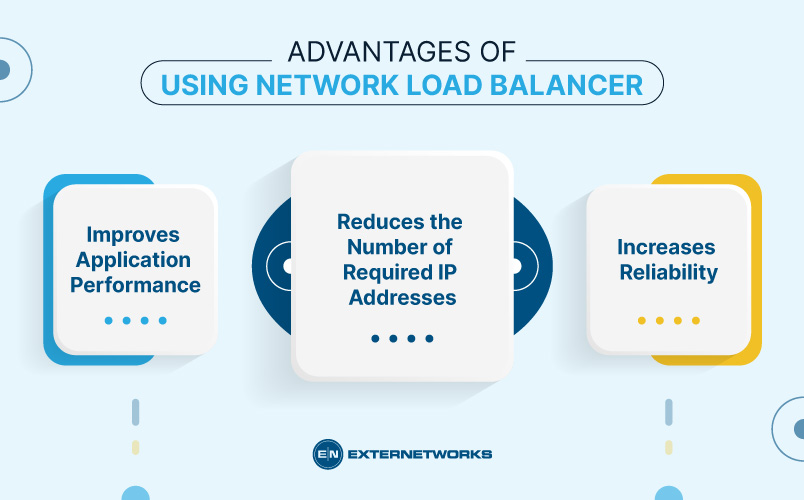28.4k views
Network Load Balancer (NLB) appliances provide centralized management and failover capabilities for network devices like routers, firewalls, switches, and more. These appliances are designed to improve application performance, reliability, availability, and scalability. Read the article below to know more about NLB.
A network load balancer is a device that distributes traffic across a group of computers or networks. The load balancer directs requests to an appropriate computer-based on availability, performance, security, or any combination of these factors.
A network load balancer works by receiving requests from clients, routing them to a particular host, and forwarding the requests to the appropriate host. The load balancer determines how to route each request based on information about the destination host and the current state of the hosts.
A network load balancing system consists of hardware and software components. Hardware includes the load balancer itself, which may consist of a dedicated appliance or be incorporated into a router or switch. The software consists of a management console, which allows you to configure settings such as which services should be balanced, how often they should be checked, and whether the load balancer should send error messages back to the client.
When a client makes a request, the load balancer receives it. If the load balancer has been configured to forward requests to specific hosts, then the load balancer forwards the request to the appropriate host. If there is no match between the destination address and the list of addresses stored within the load balancer, then the load balancer forwards the request to another host. This process continues until a matching host is found or the entire list of addresses has been exhausted.
If the load balancer finds a matching host, then the load balancer sends the request to the matched host. If the load balancer does not find a matching host, it sends the request to the next available host in its list of addresses.
When a host receives a request, the host checks its list of addresses and routes the request accordingly. For example, if a web server has two IP addresses, one public and one private, the load balancer will direct all incoming requests to the public address first before sending the request to the private address.
There are many reasons why organizations use network load balancers. Some of the most common reasons include:

By using NLB, an organization reduces the number of IP addresses it needs. For example, an organization with 20 servers might require 10 IP addresses. But if the organization uses NLB, it will only need 5 IP addresses.
If an organization’s servers fail, they must be replaced immediately. With a static IP address, the organization cannot replace a failed server until the next time the server receives a request, which means downtime for the end-users.
With NLB, however, the organization does not have to wait for the next reboot cycle to replace a failed server. Instead, the new server automatically becomes active when the old server reboots.
With a static IP address, a single server’s entire load is placed on that server. As a result, the performance of the server decreases dramatically.
With NLB, however, each server shares the workload equally. Therefore, the performance of each server remains high.
Network Load Balancing requires expensive hardware and software. In addition, setting up NLB requires additional configuration steps.
The process of configuring NLB is complicated, and it involves several steps. First, the administrator must configure the router or firewall to forward traffic from the public-facing interface to the private-facing interface. Then, the administrator must create virtual IP addresses and define rules that determine how the traffic should be distributed across the servers.
The administrator also must ensure that the servers are configured correctly. Each server must know its IP address, port numbers, and protocol settings.
Although many vendors offer NLB solutions, most do not provide interoperability between their products. Thus, organizations must purchase different types of equipment to implement NLB.
In conclusion, network load balancers are important to every web host’s infrastructure. They allow the web hosts to manage the load of the servers efficiently without having to worry about maintaining the servers themselves.
